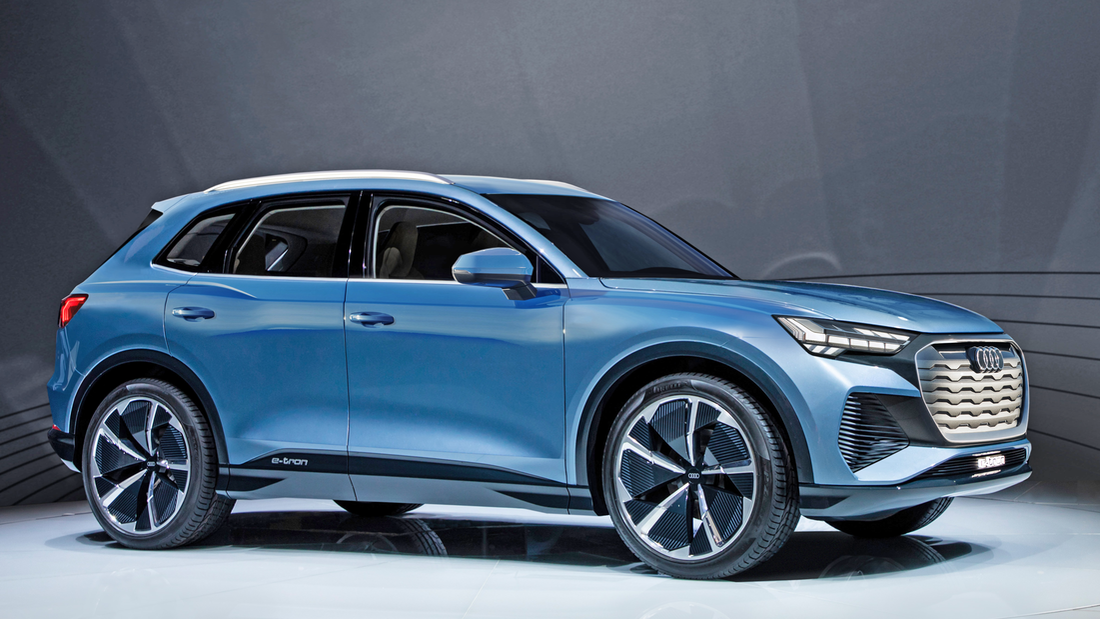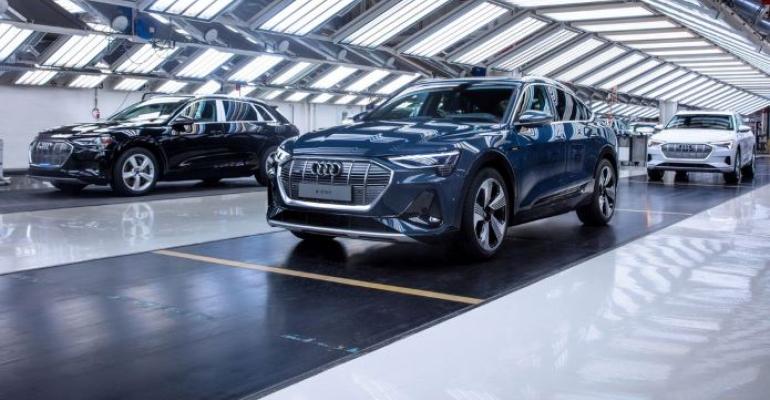Audi announces it will phase out all global production of vehicles powered by internal-combustion engines by 2033.
The automaker says it only will launch new all-electric models from 2026 as part of its Vorsprung 2030 corporate strategy. It is preparing its global facilities for the production of all-electric cars.
Two Audi sites, Böllinger Höfe in Germany and Brussels in Belgium, already produce all-electric vehicles. Starting next year, the Audi Q6 e-tron will be the first all-electric model to roll off the production line in Ingolstadt, Germany, and production of all-electric cars will gradually start in Neckarsulm, Germany; San José Chiapa, Mexico; and Győr, Hungary, as well.
In 2029, all production sites will be producing at least one all-electric vehicle model. Depending on local conditions, production of the remaining combustion models will be phased out by the beginning of the next decade.
The automaker says new plants will be built only where additional capacity is needed. For example, Audi and its partner FAW currently are building a site in Changchun, China, where models based on the PPE (Premium Platform Electric) technology platform will be locally produced. With construction set to finish by the end of 2024, this will be the first automotive plant in China where only all-electric Audi models roll off the line.
The automaker wants to achieve four central goals.
Firstly, to ensure that future production will be economical, annual factory costs are to be cut in half by 2033. To achieve this, the brand plans to reduce the complexity of its vehicles where it does not benefit the customer.
Secondly, production will continue to be digitalized, for example, with the Edge Cloud 4 Production solution using local servers. This is hoped to replace expensive industrial PCs, reducing IT efforts such as software rollouts and operating system changes. In the future, Audi also will use another new solution – cycle-independent modular assembly – to simplify work with high product variability. Virtual assembly planning saves material resources and makes innovative, flexible collaboration possible across locations.

The last two goals are sustainability and flexibility in production processes. To this end, the new Audi Q6 e-tron (pictured, above), for example, initially will be made in Ingolstadt on the same line as the Audi A4 and A5. The electric model then will gradually replace the ICE cars on the lines.
Audi has been pursuing its Mission:Zero environmental program to reduce its ecological footprint related to production and logistics since 2019. To this end, the plants in Brussels and Győr as well as Böllinger Höfe in Neckarsulm already have been converted.
The environmental program also addresses resource and water efficiency as well as the protection and preservation of biodiversity. Audi plans to halve today’s ecologically weighted water consumption value in its production sites by 2035.
By 2030, the company aims to cut its absolute environmental impact in the areas of primary energy consumption, power plant emissions, CO2 equivalents, air pollutants, local water risk, and wastewater and waste volumes in half, compared to that in 2018. Steps to achieving this goal include generating renewable energy in-house and adopting innovative technologies to create more circular value chains where resources are utilized in closed cycles.





